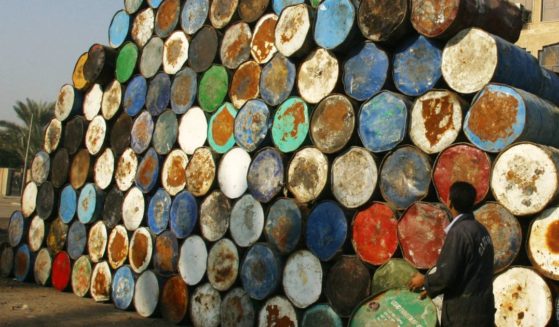Farmers Look at Rio Grande and See Terrible Sight for First Time in 40 Years
Part of the Rio Grande River that flows through Albuquerque, New Mexico — and supplies farmers in the area — has run dry amid a drought slamming the Southwest.
“We’re pretty much out of water at this point,” Jason Casuga, CEO of the Middle Rio Grande Conservancy District, told The Washington Post in an article published Friday.
Casuga noted that although some parts of the river run dry between the spring snowmelt and autumn rains, the section of the river near Albuquerque has not been like this since 1983.
“Most folks in Albuquerque who have lived here have grown up always seeing the river have water,” he said.
https://t.co/o67LNWkRBk
3 years of drought and the Rio Grande is about out of water— David Bernknopf (@DavidBernknopf) July 23, 2022
“So it would be a real big surprise to wake up and go outside and look at the river and realize, ‘hey there’s no water,'” he told the post.
But that was what took place Friday, he said.
The region has faced three years of severe drought. Some late June rain gave the parched land a dollop of relief, but July ushered in triple-digit highs.
As of Thursday, more than 73 percent of New Mexico is labeled an area of “extreme” or “severe” drought, according to the U.S. Drought Monitor.
Casuga said options to tap reservoirs or lakes to avert the dry river have either already been explored or are no longer practicable in the drought.
Shocked to see the river so dry today crossing over Rio Bravo in the South Valley before my flight. Officials were catching silvery minnows in nets.
Here is what a drying river looks like from the air @LauraPaskus #nmwater pic.twitter.com/MQBjoRG34U
— Redtailed muse (@redtailmuse) July 22, 2022
Casuga told KOB-TV in Albuquerque that the drought is hurting the region’s farmers.
“We are working with our legislature on funding to support the farmers, maybe in times of drought, because this is what they do for a living, and if there’s not water, they can’t grow,” Casuga said, according to KOB-TV.
He noted that with the heat looking to continue, there is only one way the river can get back to normal.
“If you’re a praying sort of person, pray for rain,” Casuga said.
This is the Rio Grande River in Los Lunas, NM. I suppose we should call it the Rio Grande Riverbed. pic.twitter.com/lpFtFcmpc5
— Molly Rogers (@JollyMollyRedux) July 23, 2022
Glen Duggins, a farmer in Socorro County, south of Albuquerque, told KOB-TV that he has to pump his own water for his crops, because the Rio Grande can’t supply it.
“It comes at a price of about $500 a day,” Duggins told the station.
“People that have diesel pumps are even going to be at a bigger disadvantage. It’s going to be even more costly. And besides the cost of running the pumps, you have the cost of maintaining them, of drilling them in the first place.”
After the spring runoff ends, stretches of the Middle Rio Grande south of Albuquerque often dry during the hottest summer months. This year, drying began on June 5, in parts of the river south of Socorro. pic.twitter.com/v2rWhAN4wd
— Bureau of Reclamation (@usbr) July 21, 2022
John Fleck, who is writing a book about the river, called it ‘a lovely puddly mess of mud.”
“But there is no longer water flowing from one puddle to the next. The official word this morning is that there’s a half a mile of drying,” he wrote in a blog post Friday.
“Even as the river’s surface flows dry, the ditches are drying too. Irrigators have been warned that absent rain, there will be very little to water their land very soon,” he wrote.
Truth and Accuracy
We are committed to truth and accuracy in all of our journalism. Read our editorial standards.












